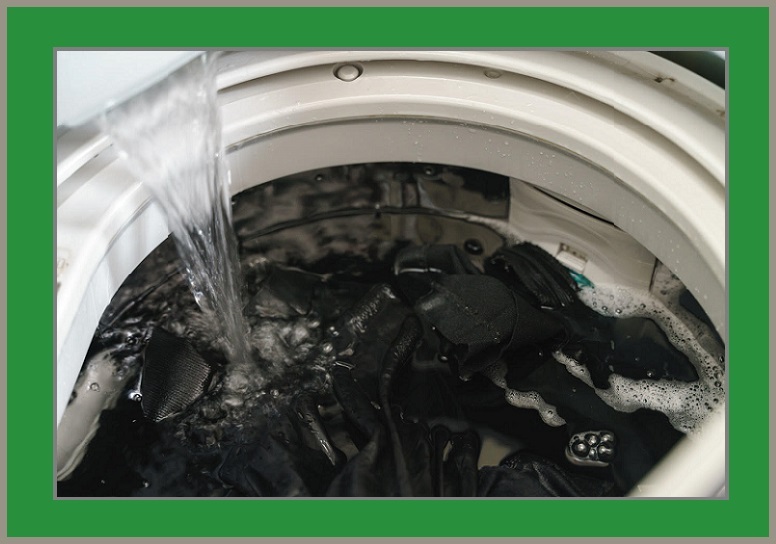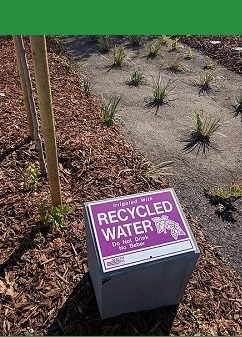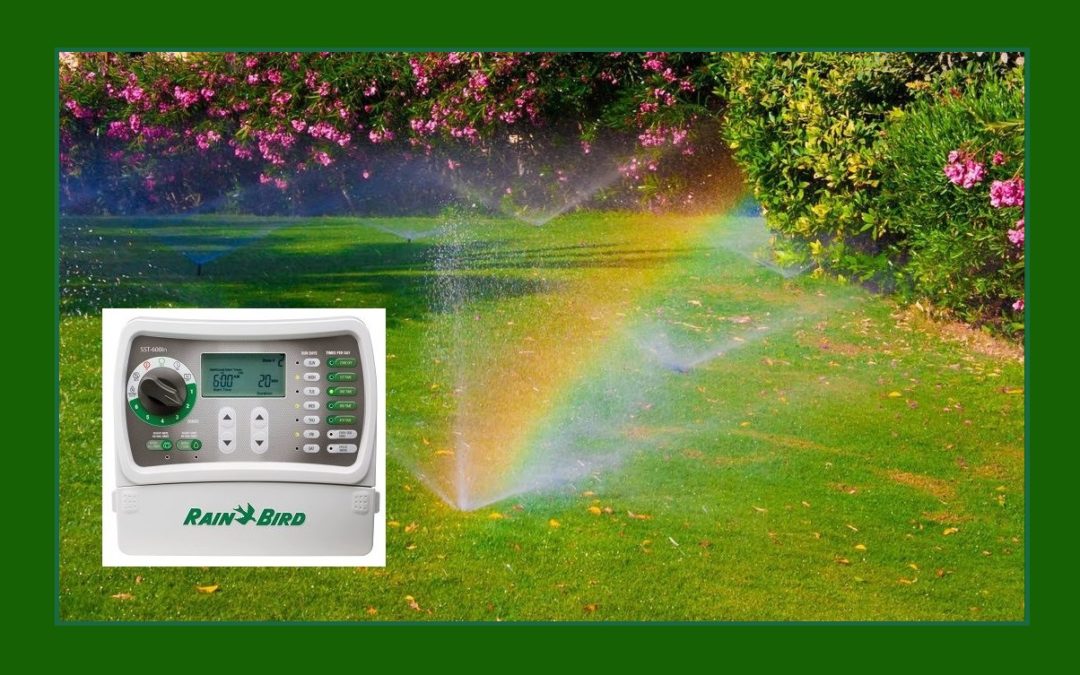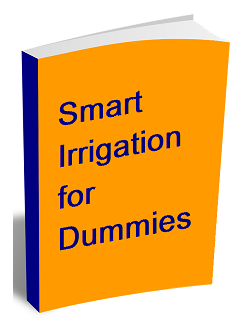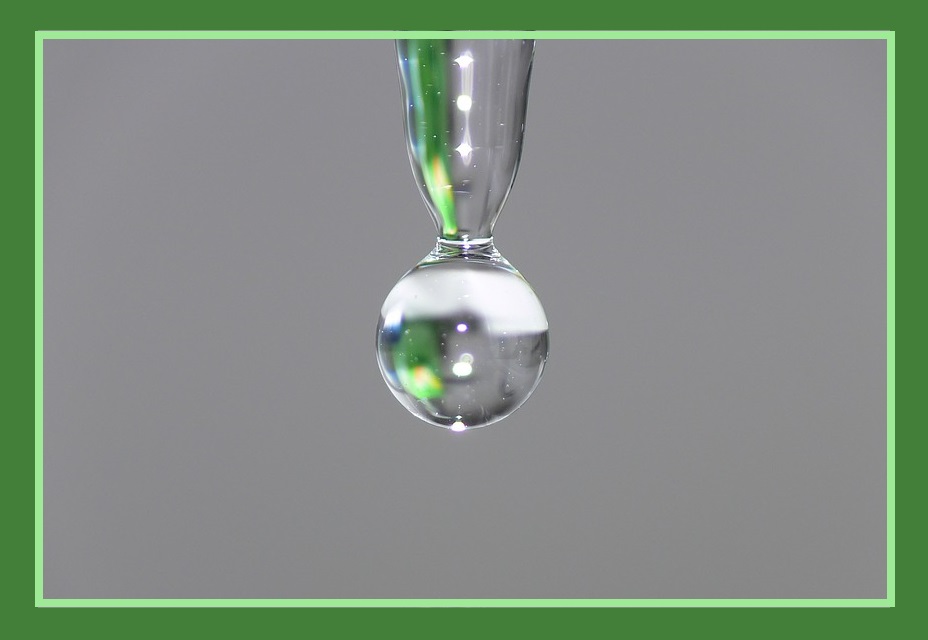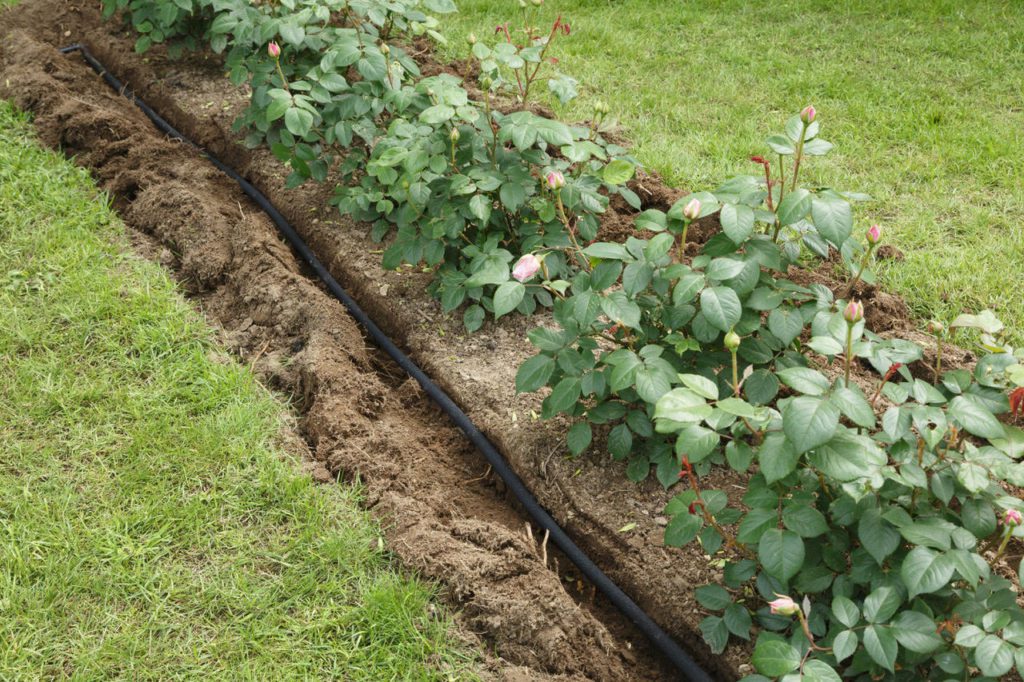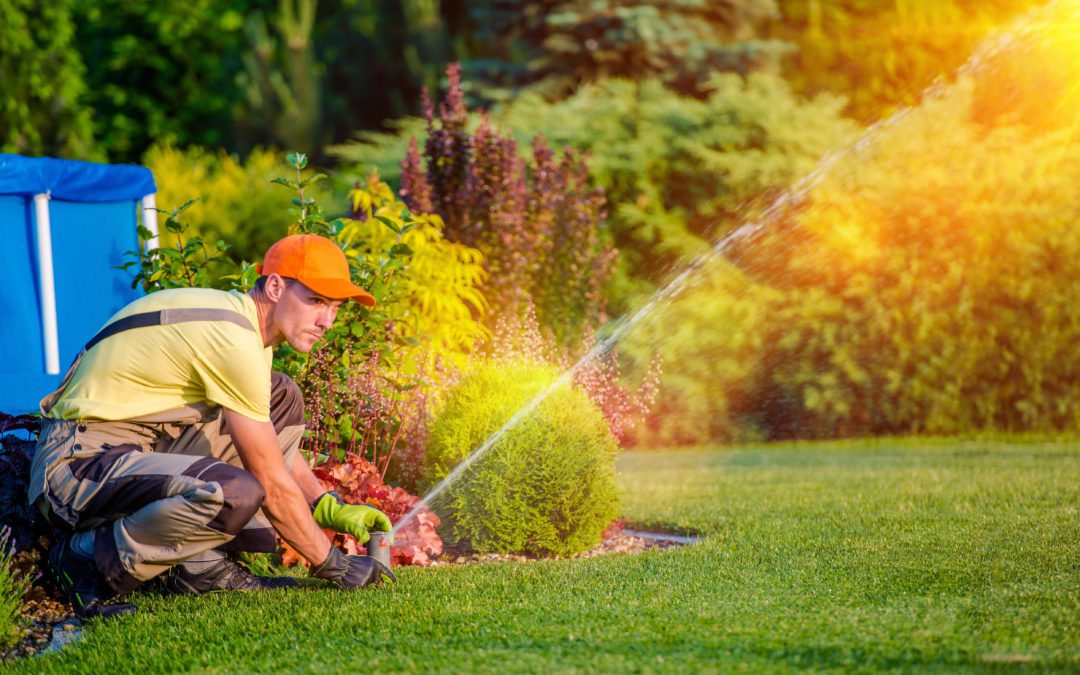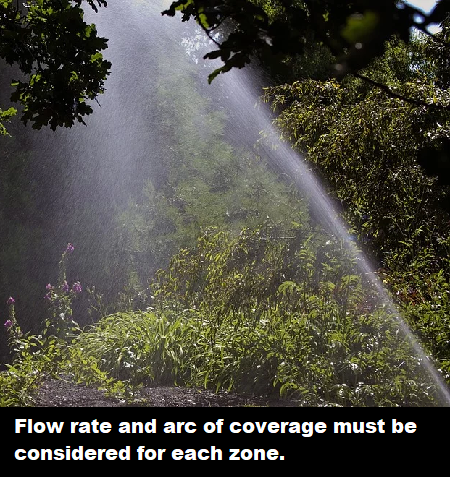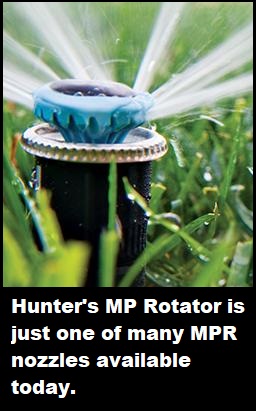
by Tom Barrett | Oct 7, 2020
Best Practices for Winterizing
Irrigation Systems
With temperatures dropping across the state, it’s time for irrigation contractors to start making their “winter money” – the cold, hard cash that comes from kicking their winterization programs into high gear.
We’ve compiled a list of best practices to streamline the process and help avoid potential problems.
When to Winterize: Start Early
![]()
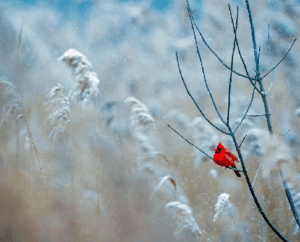
Ohio First-Freeze
Dates
When does the first freeze of the fall season normally occur in Ohio? Here are the earliest, latest, and average freeze dates:

Plan for winterizations well in advance. Otherwise, you may not have ready access to the equipment you need, such as a commercial-grade air compressor. Remember: Every landscaper in town will be striving to winterize irrigation systems at the same time.
So don’t be left out in the cold. Start scheduling shutdowns with customers and your irrigation technicians as soon as possible. Highest priority should be given to those systems with exposed pumps, piping or backflow devices.
You don’t want to risk potential damage to your customers’ systems by waiting too long. Once December hits, you can expect frozen backflow preventers and exposed pipes. By then, it’s often too cold to do a good job.
The Right Tools to Winterize
Make sure your crews are equipped with the right tools to winterize. Of course, you’ll want to have plenty of standard parts available to make any necessary repairs to the systems. But technicians will also need a commercial air compressor, an air hose, and fittings that properly affix to the backflow device.
The air compressor should provide a minimum of 100 cubic feet per minute, but preferably more, depending on the size of the irrigation system. Smaller compressors, even at 100 psi, cannot deliver the air volume needed to winterize an irrigation system. In fact, 80% of the portable air compressors in use today provide 185 cfm.
If the main shut-off valve is outdoors, you’ll want to use foam insulation tape to protect it (as well as any other above-ground piping) from freezing.
Proper Winterization Techniques
Create a winterization checklist for your technicians to use at each job site. This will prevent them from missing steps and ensure uniformity of service.
 The checklist should include the following:
The checklist should include the following:
- Locate the shut-off valve and turn off the property’s water supply. Check the property’s data sheet for the valve’s location and other specific information, such as faucet zones and pumps.
- Turn off any pumps to prevent damage.
- Set the compressor for 50-80 psi, to avoid damaging the system. (For drip irrigation systems, set the pressure for 20 or 30 psi.)
- Connect to a blowout port, open a zone and then open the air compressor valve. Move most of the water out of the main lines by blowing out the farthest zone first.
- Move through the entire system, one zone at a time. Continue blowing air through the lines until only fog is emitted from the sprinkler heads. Do not allow the rotating nozzles to spin too quickly – this can damage the gears. (When they start to spurt, turn them off.)
CAUTION!
The expanding air coming from the air compressor into the irrigation system will get hot and may melt the plastic pipe. Carefully check the temperature of the air hose connection at the blow-out point. Slow down or stop momentarily if it feels too hot! Cycling through each zone two or three times for short intervals will prevent too much heat buildup.
- Partially close the ball valves on the backflow preventer, and complete blowing out the last zone.
- Turn off the air compressor and allow all the air to exit the system.
- Drain the backflow preventer.
- Remove submersible pumps from the water. For centrifugal pumps, remove the drain valve and check valve, and disconnect the power supply.
- Turn off the irrigation system controller, but leave it plugged in to retain schedules and memory.
Good for Your Business, Good for Your Customers
Proper winterization is not only a lucrative proposition for contractors, it can be a terrific cost savings to customers. Failure to professionally winterize irrigation systems can result in costly issues, such as cracked plumbing, sprinkler heads and backflow devices. Even flexible polyethylene pipe can begin to have random splits if a system is neglected, creating the need for multiple in-ground repairs.
Proper shutdown techniques not only prevent freezing issues in the winter, they also forestall potential water damage once the system is activated in the spring. It’s a win-win for your business and your customers!
Sources:
Featured Image: Pixabay
Landscape Management
Irrigation & Green Industry

by Tom Barrett | Sep 9, 2020
Predicted Water Shortages Driving Demand for Greywater Irrigation
Water scarcity is an issue we normally associate with the western United States. But a recent U.S. Forest Service study predicts that Ohio and the rest of the Midwest also will be threatened by significant water shortages in the next few decades.
And the U.S. Government Accountability Office (GAO) expects that all but 10 states will experience shortages as early as 2024.
In such an environment, greywater irrigation systems will become increasingly popular, and perhaps even mandatory for commercial properties.
What Exactly Is Greywater?
Greywater (also spelled “gray water” or “graywater”) is gently used water from washing machines, bathroom sinks, tubs and showers.

The city of San Antonio, Texas, has the nation’s largest direct recycled water system, with a capacity to deliver about 29 million gallons per day of treated recycled water, using more than 130 miles of pipeline.
Source: San Antonio Water System
The name comes from its rather murky appearance, caused by traces of dirt, hair, grease, food and some household cleaning products.
Unlike “blackwater,” greywater has had no contact with any human waste from the toilet, sewer system, or from washing diapers. So while it may look dirty, greywater is a safe – and even beneficial – irrigation source. The same greywater that currently pollutes our lakes and rivers with its trace biomaterials becomes valuable fertilizer to plants.
(Greywater is not potable, however, and should never be consumed by humans or animals.)
Greywater vs. Recycled Water
Greywater is often confused with reclaimed (or recycled) water. And the terms are often used interchangeably. But they are not the same.
Recycled water is sewer water that has been cleaned with chemicals at a sewage treatment plant. It is then delivered to an entire community via purple-colored pipes, and is used primarily to irrigate parks, golf courses and other public areas.
Components of a Greywater System
Greywater irrigation is comprised of three primary stages: collection, storage and use. This can be as simple as a single diverting valve on a home’s washing machine, or a complex system of pumps, filters, storage tanks and pipes. The result is filtered greywater delivered directly to lawns, gardens and other landscaped areas via the property’s irrigation system.
–Article Continues Below–

The most basic greywater system uses a three-way valve to connect a clothes washer with a home’s irrigation system. Another excellent source of greywater is condensate from an air conditioning system, which can produce as much as 20 gallons of water per day. Integrating with a smart irrigation controller ensures water efficiency.
The water may be delivered via driplines or spray heads, but all pipes and fixtures must be purple and designated as greywater conveyors of non-potable water. The water may be used to irrigate ornamental plants, fruit trees and vegetable plants other than root vegetables, but it must not touch any edible portion of the plant.
Benefits of a Greywater System

Greywater
in Ohio
Greywater can be reused and recycled in Ohio with a permit from the local health department (Ohio Code 3701-29-17).
All pipes and fixtures conveying greywater must be purple or marked with a purple stripe and be labeled “Non-potable water, do not drink.”
There are four types of greywater systems permitted in Ohio:
TYPE 1 recycles less than 60 gallons per day. Used for subsurface irrigation of gardens, lawns and landscape plants during the growing season.
TYPE 2 recycles more than 60 gallons per day but less than 1,000 gallons per day. Also used for subsurface irrigation of gardens, lawns and landscape plants during the growing season
TYPE 3 recycles hand-carried gray water that is poured through a screen into a disposal sump tank before discharging into leach field trenches. Commonly used in campgrounds, Amish homes and remote vacation homes.
TYPE 4 recycles treated greywater to be reused year-round outside or inside buildings. Water is stored for no longer than 24 hours before reuse. Outdoors, used for green roofs, living walls, surface and subsurface irrigation of lawns, gardens, and landscape plants. Indoors, used to irrigate houseplants or living walls.
Source: Ohio State University
- Greywater systems save water and money. Manufacturers of greywater systems state that greywater irrigation can save as homeowners much as 40,000 gallons of water per year. The result is a dramatic decrease in water bills, especially during the summer months. According to Saniflo spokesman Chris Peterson, “Homeowners who begin recycling greywater now could be well ahead of the curve if and when their states begin requiring water conservation measures.”
- Greywater systems prolong the lives of septic tanks because the amount of water being deposited into the system is greatly reduced.
- Most ornamental plants find greywater to be more beneficial than tap water. Greywater contains residues, such as nitrogen, which many plants can use for food. Roses, bougainvilleas and honeysuckle particularly benefit from greywater irrigation. In addition, slightly soapy water will percolate more deeply into the soil, preventing runoff.
What It Means for Irrigation Contractors
The experts at Rain Bird believe that many (if not most) of new commercial building projects will soon require greywater or some other water-harvesting system be integrated into their landscape irrigation designs. (Hunter Industries currently uses greywater irrigation at all of its operational sites.)
In other words, irrigation professionals who haven’t yet designed and installed these systems will do so in the near future.
Want to Learn More?
Rain Bird’s Design Guide for Non-Potable Water Irrigation Systems can get you started on ways to incorporate greywater irrigation in your menu of services.
Sources:
Featured Image: Adobe, License Granted
Science Alert
WateReuse
Medium
Rain Bird

by Tom Barrett | Aug 5, 2020
Are Your Customers Still Using Standard Irrigation Timers?
Smart technology may be everywhere, but irrigation contractors know that standard, old-school irrigation timers are still very much out there.
These basic clock timers are still being manufactured, installed and maintained—so they’re not going anywhere soon. According to Rick Arena, a training manager at SiteOne in North Carolina, “Probably 75% or more of all controllers sold right now are still the old style.”
And while they’re not capable of making any complicated decisions, for certain applications, these “old timers” are actually better suited.

How to Get Smarter
Just about every “dumb” irrigation controller made in the last decade or two includes sensor terminals for connecting to a rain or soil-moisture sensor.
Numerous add-on devices are available, such as:
Hunter’s Rain-Clik, Mini-Clik, Freeze-Clik, Soil-Clik and Mini-Weather Station devices, which will work with virtually any controller.
Rain Bird offers a LNK Wi-Fi module for weather-based water management, which can be plugged into any of their ESP-TM2 and ESP-Me Series controllers that were manufactured after Nov. 2, 2016. For Rain Bird controllers made before that date, a Wi-Fi-compatible replacement panel can be installed.
ETwater from Jain offers a retrofit smart controller which can be attached in less than 10 minutes and is compatible with all irrigation controller brands.
Keep It Coming
A perfect example is a new lawn, whether sod or seed. With standard irrigation timers, the water is applied at regular intervals with no exceptions. Which is what you want with new turf: frequent, short bursts of water for at least 30 days, until the grass takes root.
In fact, standard timers are often installed (at least temporarily) to maintain curb appeal for newly built homes.
Paradign Shift
Another reason standard timers are still in demand is their simplicity. As it turns out, not every homeowner wants an irrigation controller that uses ET data, local weather forecasts or various sensors for its watering schedule.
Rain Bird product manager James Harris explains it this way: “New technology like smart controllers always has an adoption curve, and not everyone is ready to adopt it at the same time.”
Particularly for some older homeowners, a smart controller may as well be speaking a foreign language. They can be baffled by all the settings. And they’re not interested in investing their time learning to set up and use the latest technology. Millennials, on the other hand, naturally gravitate toward and embrace technological advances. As this younger demographic continue to purchase homes, the demand for smart controllers will likely increase.
–Article Continues Below–

This required paradigm shift applies to contractors, as well. Ramzi White is a SiteOne key account manager in Texas. He says the standard Hunter or Rain Bird clock timers are still his best sellers. In fact, many contractors in his area don’t really even know what a smart controller is.
Know Your Customer
As an irrigation contractor, the decision to offer smart technology to your clientele often comes down to knowing the customer. A 70-year-old who’s just learning how to email and text is probably not a good prospect for a smart controller. Some younger people may also prefer to have fewer bells and whistles.
But generally speaking, homeowners in their mid-40s or younger, who’ve essentially grown up with technology, enjoy integrating new gadgets into their homes. For them, smart controllers can be a very easy sell.
Sources:
Featured Image: Adobe, License Granted
Irrigation & Green Industry
Jain USA
Rain Bird

by Tom Barrett | Jul 8, 2020
Making Every Drip Count with
Drip Irrigation
Since July is Smart Irrigation Month, let’s explore one of the most effective means of conserving water in a landscape: drip irrigation.
A drip system may not be the first thing most people envision when they think of landscape irrigation. But these highly efficient systems not only conserve water, they also can irrigate slopes and oddly shaped areas with precision.
Drip Irrigation Basics
Drought in Ohio
Since 2000, the longest duration of drought in Ohio lasted 44 weeks beginning on July 23, 2002, and ending on May 20, 2003. Drought conditions ranged from “moderate” to “exceptional” during this period.
On the other hand, the most intense period of drought occurred during the week of September 4, 2007, when “extreme” drought affected more than 11 percent of the state’s land.
Source: National Integrated Drought Information System
Drip irrigation slowly and steadily delivers gallons of water per hour, as opposed to gallons of water per minute like sprinkler systems. And because the water is directed to the plants’ roots, runoff and evaporation are minimized. So less water is required.
A drip irrigation system consists of the following basic components:
- Water valve
- Backflow preventer
- Pressure regulator
- Filter
- Tubing adapter
- Dripline (PVC or polyethylene tubing)
- Emitters
- Electronic controller
Once the basic system is installed, any number of lateral lines can then be attached through various headers. Each line is fitted with water-dispersing emitters, and then can either be buried or covered with mulch.

Adobe Image, License Granted
When it comes to the dripline, contractors have two options: Insert the emitters anywhere you wish along the line, or purchase lines with pre-inserted emitters at regular intervals.
However, choosing the correct emitter is important. Output rates for emitters vary from a half gallon to two gallons per hour. Emitters with different output rates may be installed on a single dripline. This comes in handy if you need to irrigate plants with distinct watering needs that are located close together.
Adjustable emitters are also available. These allow you to regulate the water flow rate, from a steady drip to a slow stream.
Drip System Applications
Drip systems are primarily used to water flower beds, gardens and particularly small or unique landscape areas. They’re perfect for xeriscape-type gardening which requires limited irrigation.

Adobe Image, License Granted
But they can also be used to provide supplemental irrigation. For instance, drip irrigation can be added to bedding areas that are already incorporated into sprinkler zones.
In addition, drip systems can be used to irrigate larger areas, such as both new and already-established lawns. For a new lawn, simply install the dripline before sodding or planting grass seed. With an established lawn, the drip line is trenched into the turf.
Maintenance
Typically, drip systems are easier to maintain than sprinkler systems, because the emitters and dripline aren’t deeply buried. The trick is in determining when a repair is needed. Whereas a broken sprinkler head is easily identified, with a drip system, you must look for browning or wilting vegetation.
Which is why you’ll want to incorporate a flow meter in the system. This sensor will notify the controller of any flow irregularities. An alert is then sent to the home owner’s smartphone. Wireless flow meters are both affordable and easy to install.
Selling Points
Drip irrigation systems offer numerous benefits your customers should know about:
- Better plant health. Water penetrates slowly and deeply into the soil, placing moisture exactly where it’s needed – at the roots. Plants grow quickly when they are watered uniformly without stress created by lack of water.
- Less waste. A good drip irrigation directs 90 percent of the water into the soil, with very little lost to evaporation.
- Environmental benefits. Because drip irrigations are so effective, there is less chance of erosion, with very little runoff ending up in area streams and rivers.
- Reduced risk of disease. Drip irrigation keeps the foliage dry, thus reducing the incidence of powdery mildew and other diseases that occur in damp conditions.
- Weed control. Drip irrigation systems place water directly around the plant. As a result, weed seeds are water starved and germination is limited.
Like sprinkler systems, drip irrigation requires winterization. Be careful, however, that you don’t use too much air pressure when blowing out the lines. (You don’t want the emitters to pop off.) It’s also a good idea to store the backflow preventer and irrigation controller indoors for the winter.
For spring start-ups, be sure to inspect all components for cracks and splits that can occur in very cold weather.
Expanding Market
If climate experts are correct, drier days are ahead for most of the country. Which is one reason drip irrigation has become increasingly popular over the last decade.
At times of severe water restrictions, homeowners with drip systems are often allowed to irrigate several more days per week because of the greater efficiency of these systems. (In fact, these customers may be exempt from watering restrictions altogether.)
And although properly installed drip systems are typically more expensive that sprinkler systems, that initial expense is offset by the cost of water savings over time.
Drip irrigation may not represent a total change of direction for landscape irrigation contractors. But it does nevertheless represent an expanding market and is well worth adding to your menu of services.
Sources:
Featured Image: Pixabay
Irrigation & Green Industry
Wolf Creek Company

by Tom Barrett | Apr 8, 2020
Matched Precipitation Rates Prevent
Runoff and Dry Spots
As an irrigation professional, you know how important water efficiency has become to the industry.
Gone are the days of sprinkler run-off overflowing into the street. With today’s technology — smart controllers, rotary nozzles, soil moisture sensors, etc. — the irrigation industry is using water much more efficiently than ever before.
And one key to that water efficiency is matched precipitation.
The Basics
When designing sprinkler systems, matching precipitation rates can help to avoid wet and dry spots, as well as excessive run times. Which is why irrigation system designers must consider flow rates and arcs of coverage to ensure even precipitation for each coverage area or zone.

Pixabay Image
Flow rates are proportional to the degree of arc covered. For example, the flow rate of a quarter-circle (90⁰) sprinkler head is equal to one-quarter that of a full-circle (360⁰) head. Likewise, the flow rate of a half-circle (180⁰) spray is equal to one-half that of a full circle.
Matched precipitation rate can be achieved two ways:
- By zoning together sprinklers with the same precipitation rate (Gallons Per Minute x 96.3 ÷ area), or
- By selecting the appropriate Matched Precipitation Rate (MPR) nozzles.
Note: Spray and multi-stream rotary heads automatically match precipitation; single-stream rotors do not.
Zoning Together
When heads without matched precipitation rates are used in the same zone, dry spots often develop. This can lead to the extension of sprinkler run times, as the entire area is watered longer to keep the dry spot alive. That’s why it’s important to always zone together sprinkler heads with the same precipitation rate.
This can be achieved by matching the gallons per minute (GPM) of a standard rotor to its arc and reducing the range accordingly. For example, two GPM at 90⁰ would equal four GPM at 180⁰, or eight GPM if the sprinkler head covers a full circle.
An Illustration
The Hunter Industries website offers the following illustration of three different sprinkler heads with matched precipitation rates:

Hunter Industries Image
For each of these sprinkler heads, one GPM is applied to each quarter circle (assuming the throw radius is the same for each head). As a result, precipitation is matched.
On the other hand, if you were to install nozzles with the same flow rate on all three heads, areas covered by the 90⁰ head would receive four times as much water as the area covered by the full-circle head. So the quarter-circle area would flood long before areas covered by the 360⁰ head received sufficient water.
(For detailed examples of how this works, click here.)
MPR Nozzles

Hunter Industries Photo
Matched Precipitation Rate (MPR) nozzles provide a much simpler way to match precipitation rates within the respective irrigation zones. These nozzles allow sprinklers with various arcs and radii to be mixed on the same circuit. They work well, for example, with beds or turf areas that are irregularly shaped and therefore require varying radii of sprinkler heads within the same zone.
MPR nozzles offer irrigation contractors and technicians greater flexibility when working on the system. Different nozzles can be used for precise watering, while still maintaining matched precipitation rates across the irrigation zone.
Can You Mix and Still Match?
So can different types of sprinklers be used within the same zones? According to Brent Barkley, product manager for Rain Bird in Azusa, Calif., the answer is “Yes, but cautiously.”
“With careful design, and the right products, it is possible to match the precipitation rates of rotors and rotary nozzles, allowing them to be zoned together while irrigating different sections of an irregularly shaped lawn,” said Barkley. An example would be if rotors are being used on a fairly large area of turf in a front lawn, you could probably utilize some rotary nozzles to irrigate a narrow strip of side yard.
What you want to avoid, however, is a hodgepodge (“crazy quilt”) of sprinkler types with no apparent rhyme or reason. A situation like that can result when numerous repairs and alterations are performed by various contractors over the years.
Particularly on older systems, you may see the crazy quilt layout, with a combination of spray heads and rotors delivering water at much different precipitation rates. In such a situation, replacing the spray heads with rotary nozzles can help come very close to achieving matched precipitation rates without replacing the whole system.
Sources:
Featured Image: Adobe, License Granted
Hunter Industries
Irrigation & Green Industry
Irrigation Toolbox
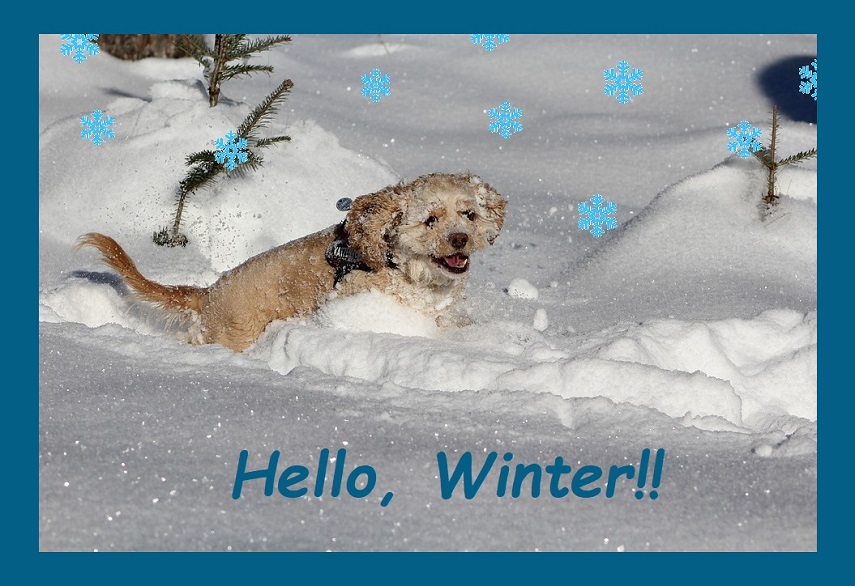


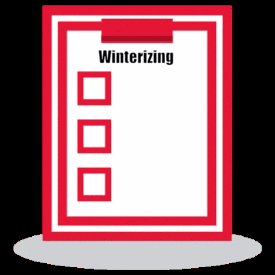 The checklist should include the following:
The checklist should include the following:
